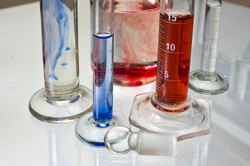How Nuclear Power Works

Nuclear power is made by controlled nuclear reactions that heat water which in turn produces steam. The steam is then used to produce the electricity. This process is carried out by harnessing the thermal energy released when the fuel is used. Most plants use the process of nuclear fission which occurs when an atomic nucleus (uranium or plutonium) absorbs a neutron. The process of fission splits the atom into multiple nuclei but also releases gamma rays.
The cooling system then removes excess heat from the reactor and takes it to where the heat can be harnessed to make electricity. The excess heat can be used to make more electricity but some is released into the water source mentioned, as a byproduct. After this, the electricity that was created is able to be spread straight to the grid and available for civilian use. An average power plant can create a gigawatt of power each day. Assuming that the average house uses a kilowatt per day, the power plant can provide power to a million homes. Nuclear power is expected to be responsible for about twenty percent of the United States' electricity (1).
The cooling system then removes excess heat from the reactor and takes it to where the heat can be harnessed to make electricity. The excess heat can be used to make more electricity but some is released into the water source mentioned, as a byproduct. After this, the electricity that was created is able to be spread straight to the grid and available for civilian use. An average power plant can create a gigawatt of power each day. Assuming that the average house uses a kilowatt per day, the power plant can provide power to a million homes. Nuclear power is expected to be responsible for about twenty percent of the United States' electricity (1).
